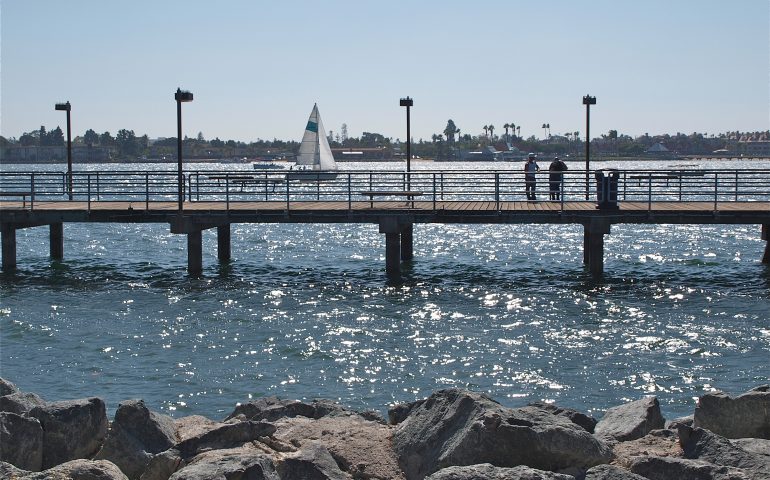Public Pier — No Fishing License Required
Almost every pier in the state has a special memory for me. Some of the memories are of social gatherings, some are of great days fishing, and a couple are because of specific fish I caught at the pier. The latter is the story at this pier. Although I had caught over one hundred different varieties of fish in California during nearly four decades of fishing, I had never caught a bonefish, (Albula vulpes), until the summer of 1999.
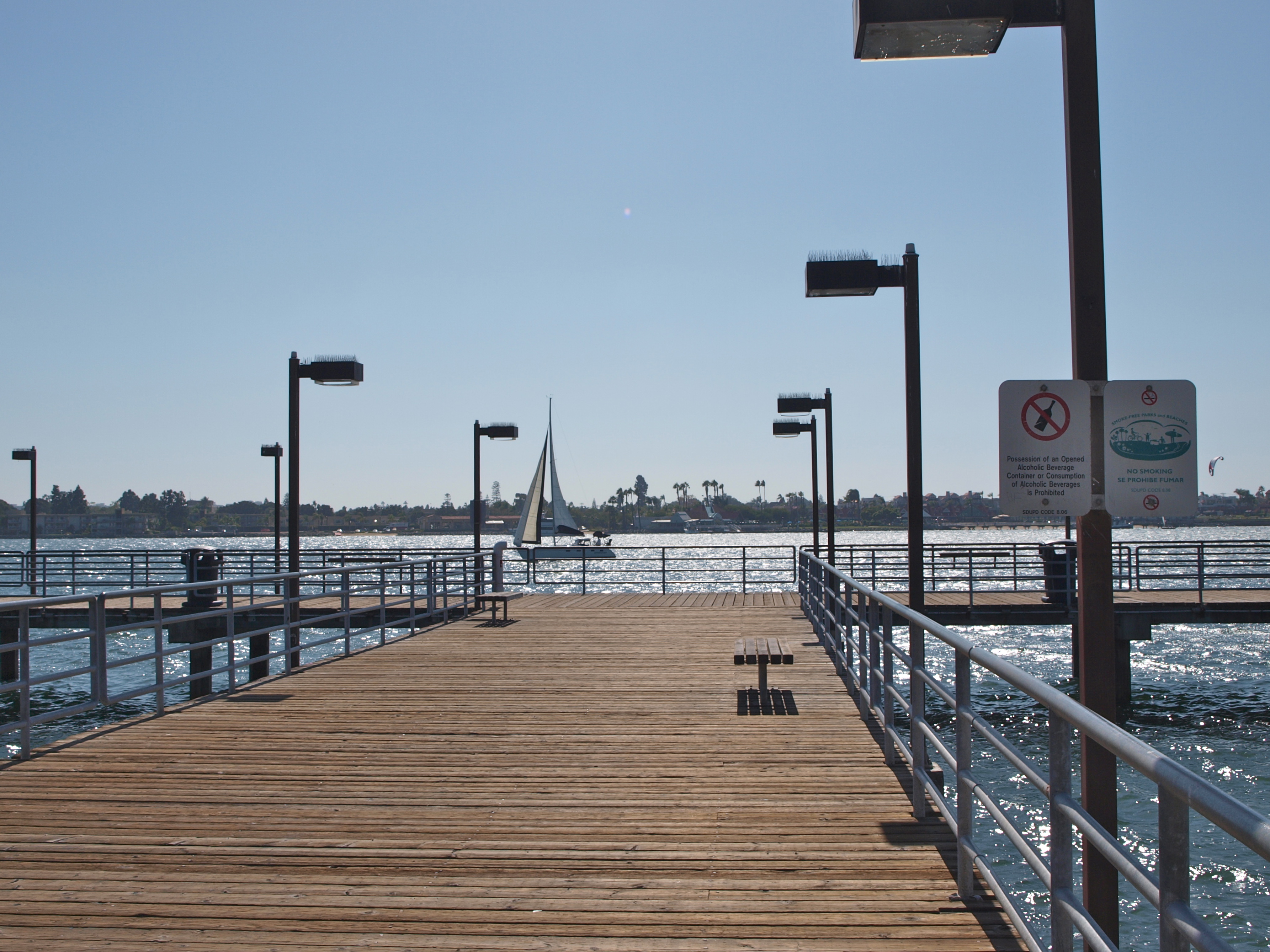
That year had been an unusual year for bonefish. In February I had received an e-mail message telling of a bonefish caught at the Balboa Pier by Snookie, a regular who had fished that pier for 55 years. It was the first bonefish she had seen at that pier. Then, in March, I began to receive reports of bonefish being caught at this pier by regulars who pulled strips of squid slowly along the bottom.
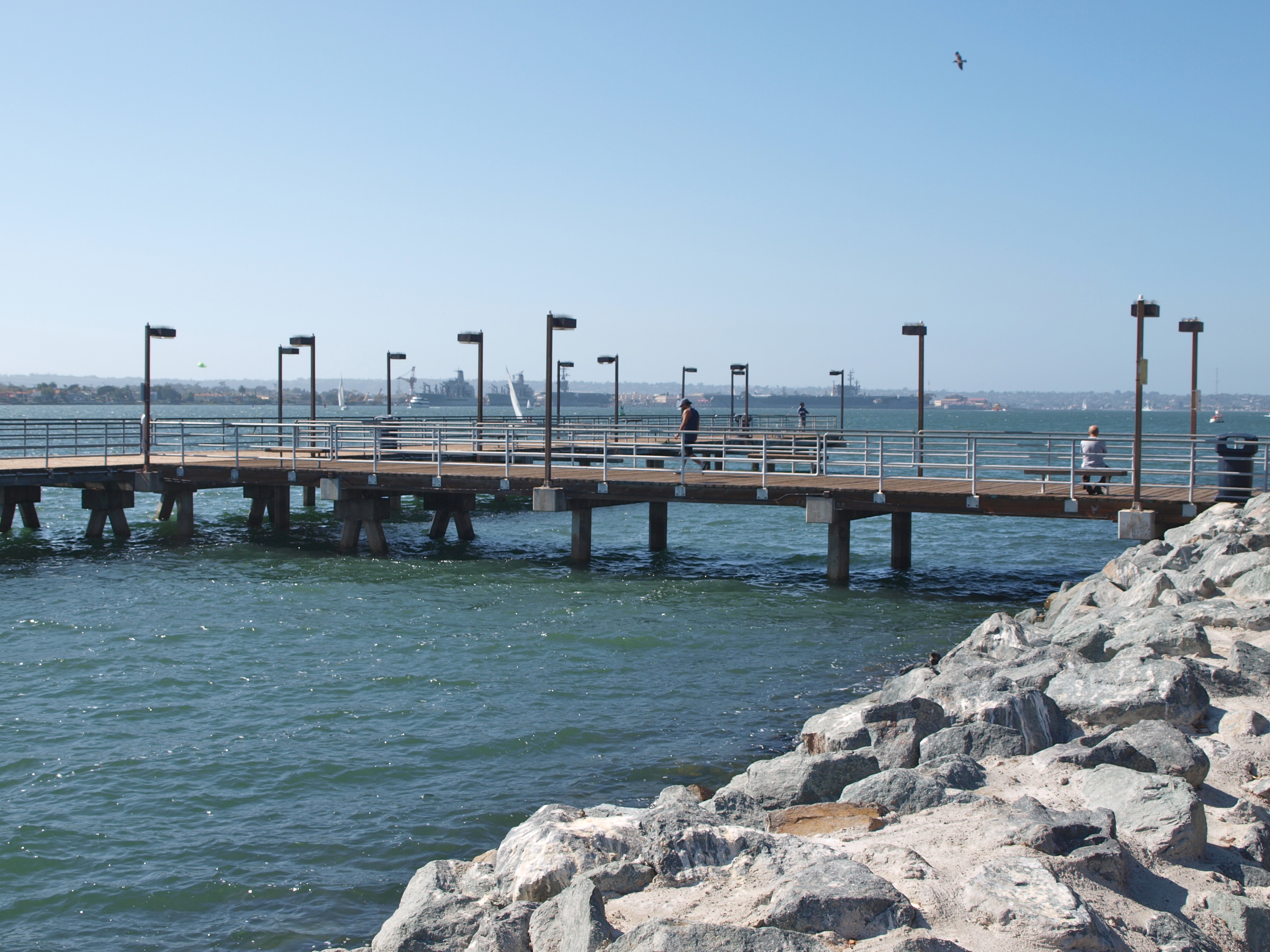
Nevertheless, bonefish are uncommon, if not rare, at California piers and I never really expected to catch one. But there I was, fishing at this pier on the afternoon of July 1, when something slammed into the ghost shrimp that I was using for bait on the bottom. The fight was decent, but not great, and imagine my surprise when up came a small 10” bonefish. I had finally caught one of the elusive fish, the “gray ghost” that anglers fly thousands of miles to fight in the Caribbean. Imagine my even greater surprise when five minutes later I caught a second bonefish, this one an 11” fish that was a little longer, a little fatter and a little stronger than the first. The other fish I caught during the next hour—three barred sand bass, three kelp bass, and two jacksmelt, simply didn’t matter. All that mattered were the bonefish.
BTW, the fish have been given a new name and classification since those days. They are now called Cortez Bonefish, Albula gilberti.
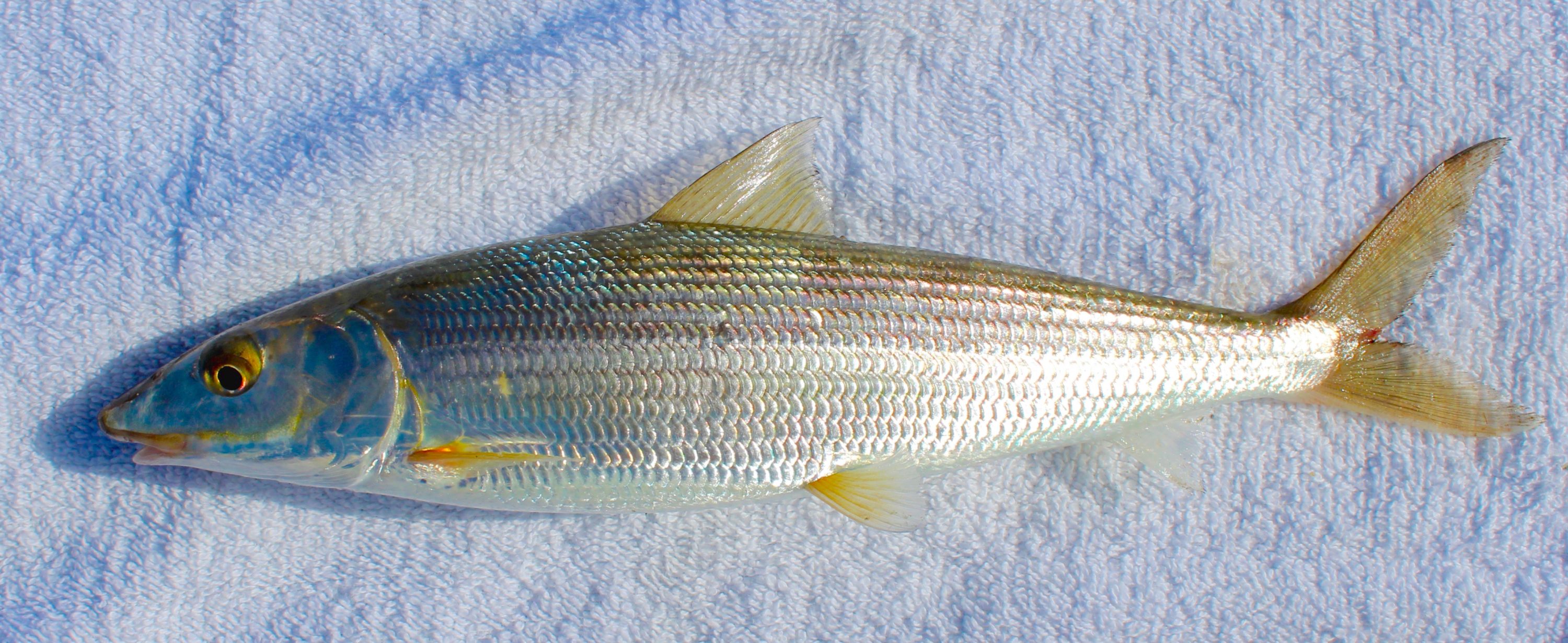
A Cortez Bonefish
Environment. This pier, located just up the shoreline from the San Diego-Coronado Bridge, has become a popular pier since its dedication in 1980. The park itself is nice, even if a little secluded and out of sight sitting as it does directly behind the San Diego Convention Center. It is close to the center of town, Petco Park (home of the Padres), the Gaslight District, and several hotels. Best for anglers is the fact that fishing has proved to be surprisingly good.
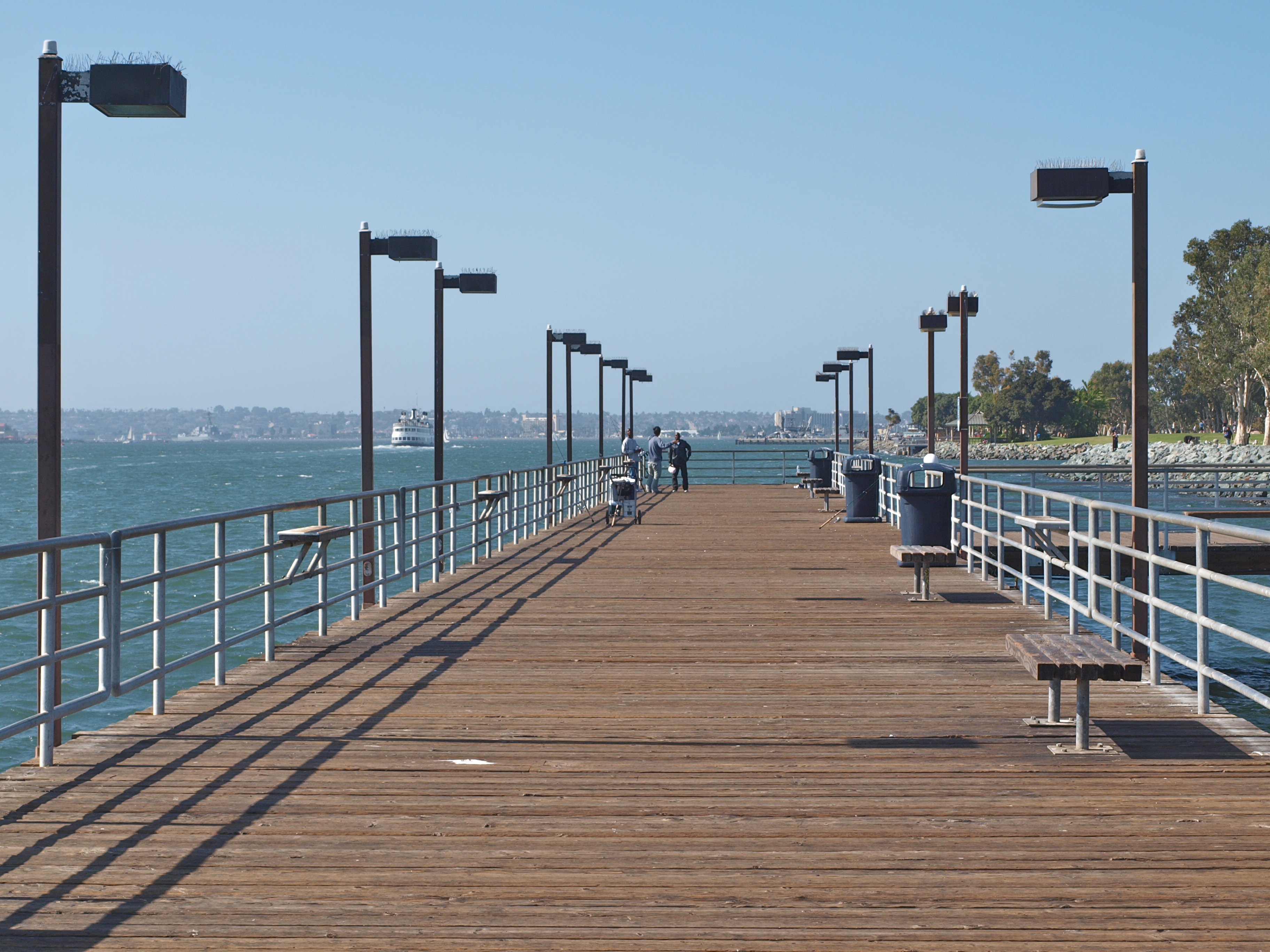
The Embarcadero Marina Pier (or South Embarcadero Park Pier) is small and extends out only 95 feet from shore but it has a T-shaped end and is 300 feet wide. This pier is located over typical bay mud bottom and inshore has considerable areas of eel grass that can at times interfere with fishing but which also acts to attract fish (especially bass). In addition, an artificial reef was constructed nearby which provides an attraction for some species. The main fishing effort is on the bay side of the pier which fronts the deeper water but good angling can also be had at times close to the shoreline rocks.
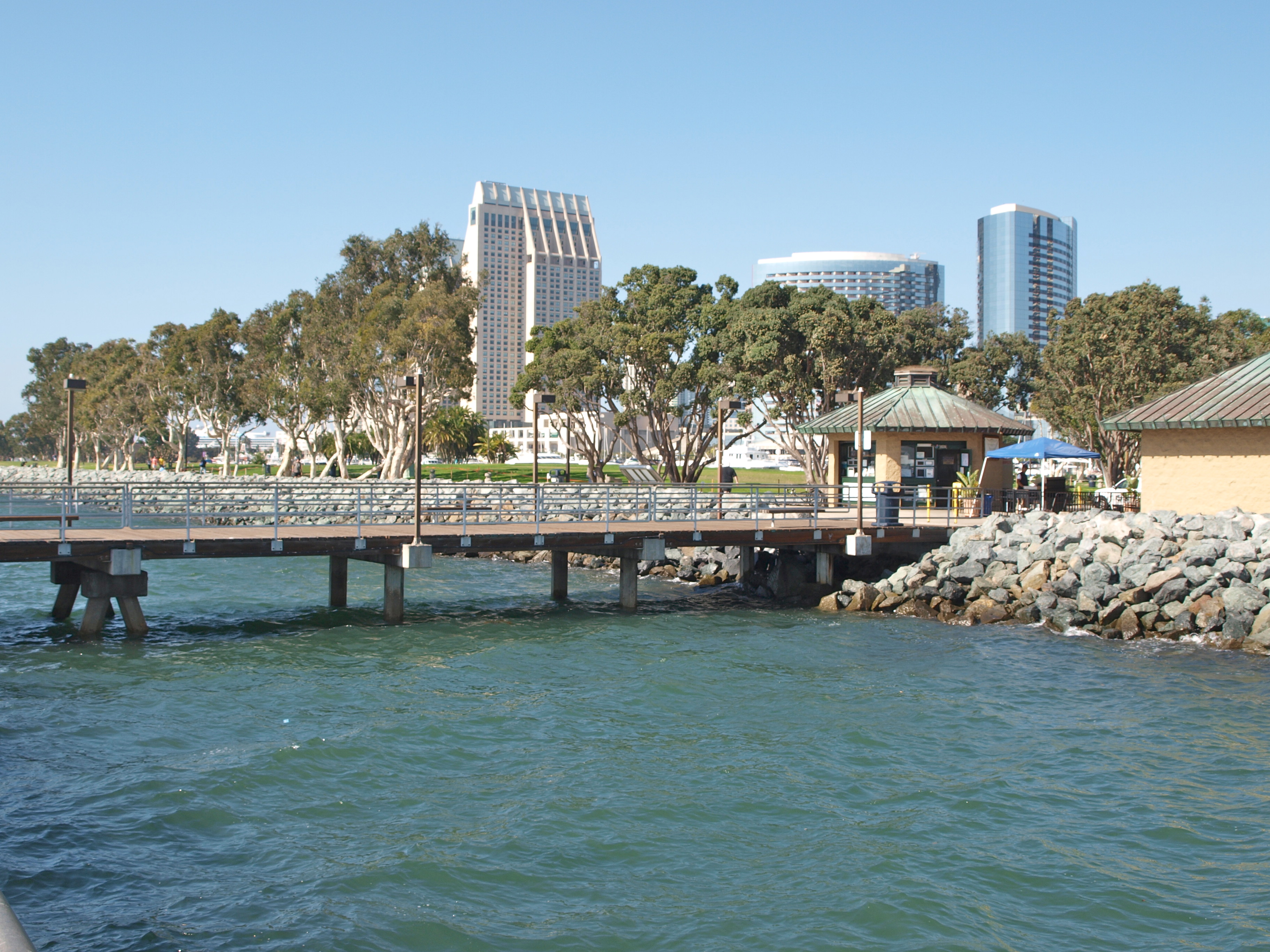
Typical species include the three members of the local bass contingent—calico bass (kelp bass), sand bass (barred sand bass), and bay bass (spotted sand bass), and it’s one of the better piers for all of these. Other bottom dwellers include the croaker family—yellowfin croaker, spotfin croaker, white croaker, and queenfish. It is also, in my opinion, one of the best piers for black croaker aka China croaker. Joining the croakers will be a look-alike fish, sargo, while an occasional blackperch (buttermouth), pileperch or rubberlip may also join in the fun. Other bottom dwellers include the flatfish—diamond turbot and halibut and the increasingly numerous lizardfish.
Mid-water to the top will typically find walleye surfperch, jacksmelt, topsmelt, and occasionally needlefish. Most of the other top water fish are pelagics—mackerel, barracuda and, some years, bonito.
Sharks and rays include round stingrays, butterfly rays, thornback rays, shovelnose sharks (guitarfish), bat rays, leopard shark, and gray smoothhound.
As mentioned, some years will see bonefish caught here (to 4 pounds) and increasingly shortfin corvina are making an appearance.
Although not really common, horn sharks, thresher sharks, and white seabass have also been landed here. Most unusual was a misplaced striped bass, an 8-10 pound specimen that was landed mid-October 2011. In addition, more and more giant (black) sea bass are being seen. An initial report came in June of 2009 when a youngster, estimated to weigh 60 pounds, was taken and released. Since then there have been increasing reports of the giant bass.
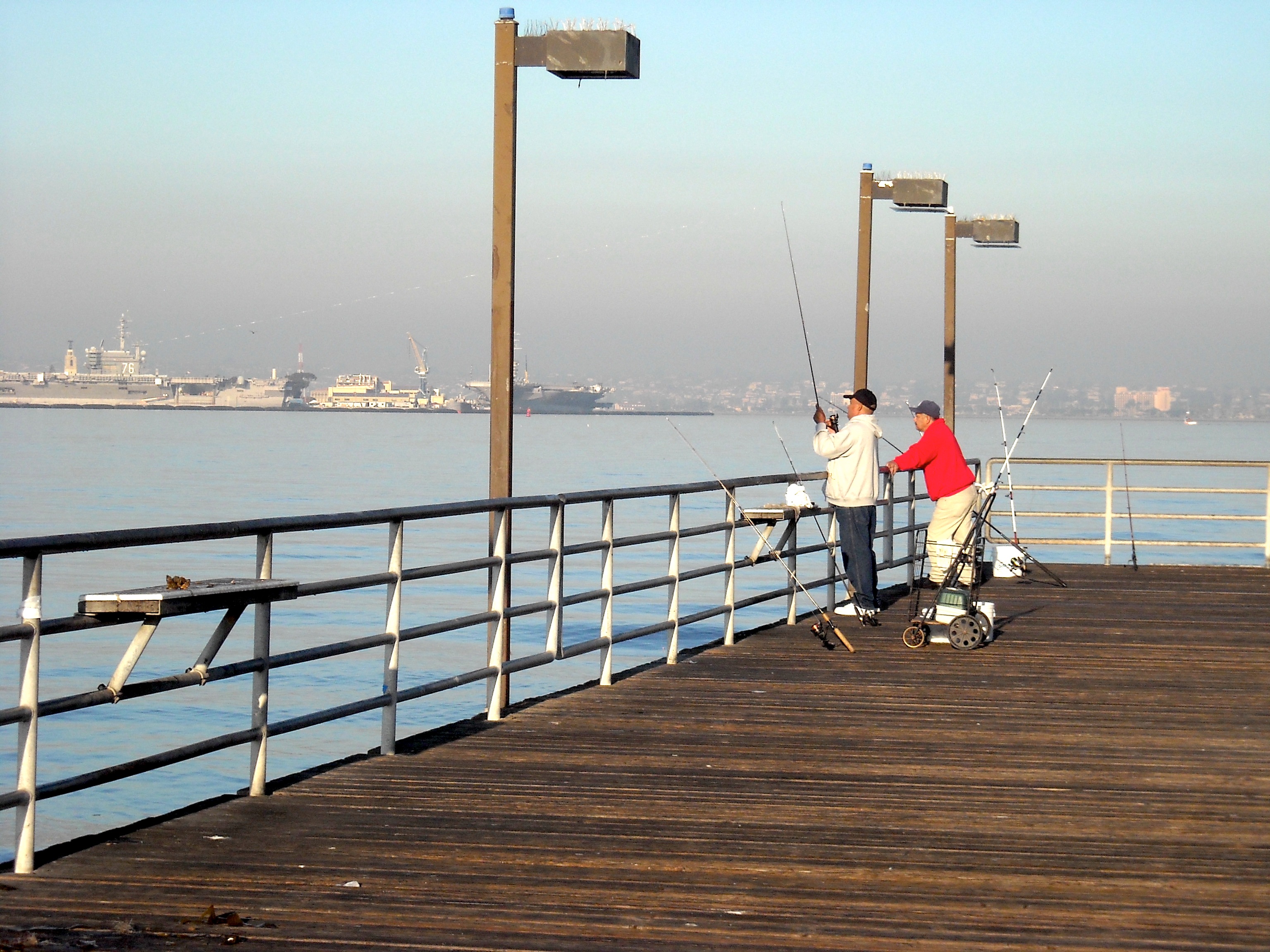
Fishing Tips. Since this is an excellent pier to catch bass, you might want to first try on the bottom using ghost shrimp, bloodworms or cut anchovies. Both ends of the pier seem good for bass but the right end seems to produce more, at least in my visits. Artificial lures, especially swimbaits like Big Hammers and weedless paddle-tail swimbaits like the Lazer Trokar Weighted Magnums seem to work well. Hookup Baits, a locally made swimbait has also proven effective, especially for spotted sand (bay) bass.
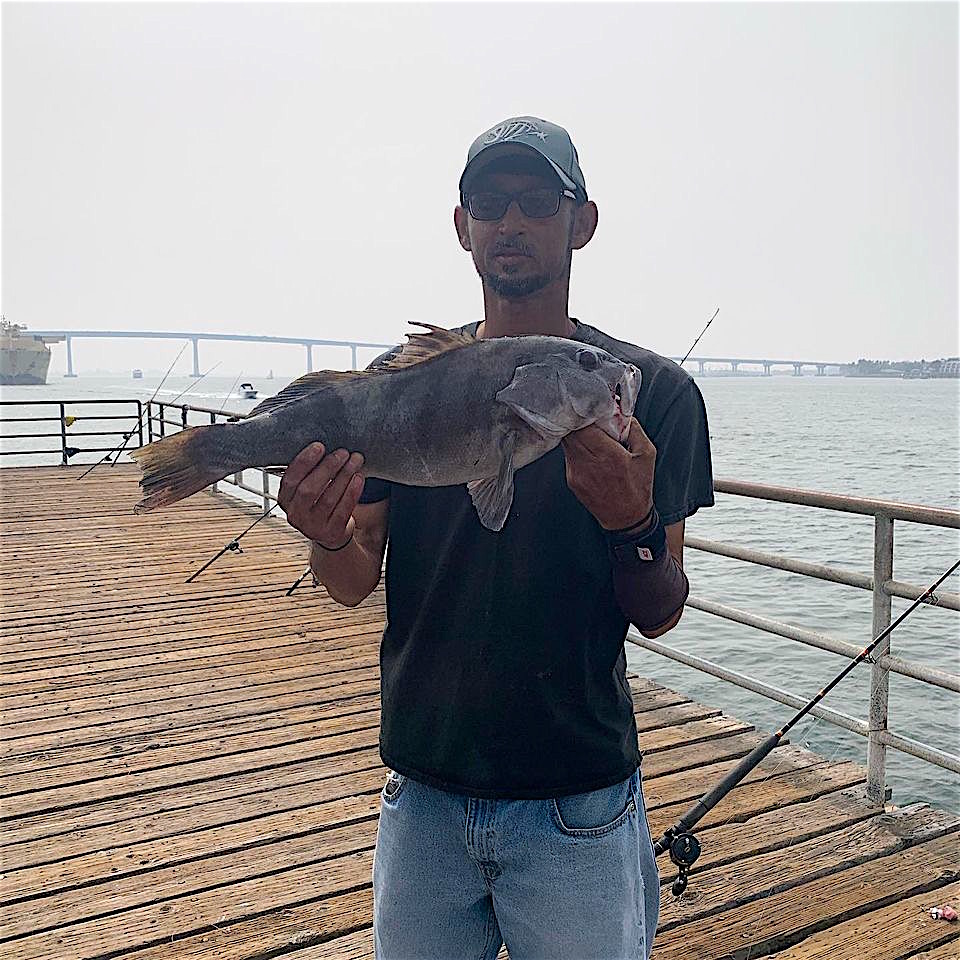
A nice Barred Sand Bass from the pier (picture courtesy of Burgers, Bait & Beer)
Remember that all of the various lures can be enhanced by the addition of one of the common commercial attractants. Also, don’t be afraid to try for kelp bass under the pier and by the pilings, kelp bass in particular will hang in those area. The spotted sand (bay) bass will often be found in the inshore grass that is found between the pier and the shoreline.
The second most common fish on the bottom are croaker, mostly yellowfin croaker, but also a few spotfins and even an occasional black croaker. Most of the croaker prefer live ghost shrimp, fresh mussels and bloodworms, but they will also sometimes be caught on clams or cut anchovies. In addition, increasingly common have been shortfin corvina a species that has moved north from Baja. South San Diego Bay is known for its corvina so it’s not surprising that they also show at this pier. Most are taken on live bait or lures and best fishing seems to be at night.
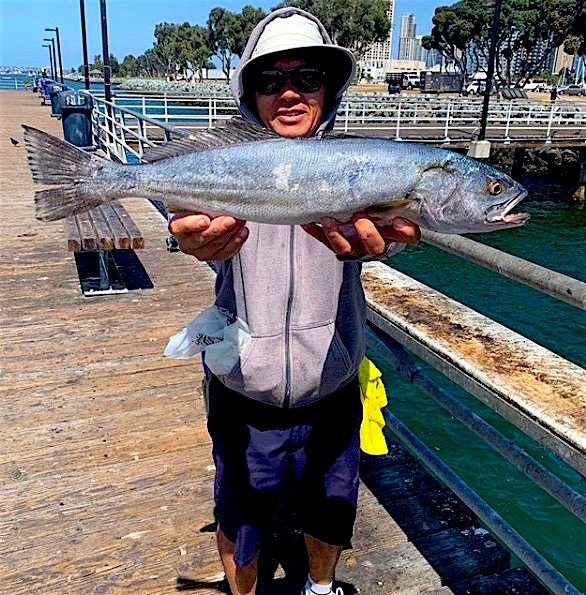
Shortfin Corvina from the pier (picture courtesy of Burgers, Bait & Beer)
Halibut are a frequent goal and fish are caught but they would be far more common if anglers used live bait. Unfortunately live anchovies are not sold at the pier. Go to a good tackle shop and buy the following: a bucket, an air pump (aerator), an “A” battery, and a drop net (umbrella drop net). Put the battery into the air pump, attach it to the bucket, add water and use the net to catch yourself some live bait. The nets, 3 1/2 feet square, are attached to a rope and lowered into the water. Usually a few pieces of bread sprinkled near the net will attract anchovies or small smelt (although some people use a soft mixture of moistened corn meal). Use the live bait on the bottom with a sliding sinker. Live anchovies remains the top bait followed by smelt, herring (queenfish) or shinerperch. But don’t despair if you can’t get live bait since the hallies will also hit on ghost shrimp, bloodworms, frozen anchovies and squid. Seasonally halibut action can be good; July ’09 saw a run of nice-sized fish with many over 30” in length.
Halibut can also be caught on artificial lures as seen by this baby juvenile halibut. As at many piers, large white-colored Blams have proven effective for the hallies as have Big Hammers, Worm Kings and others.
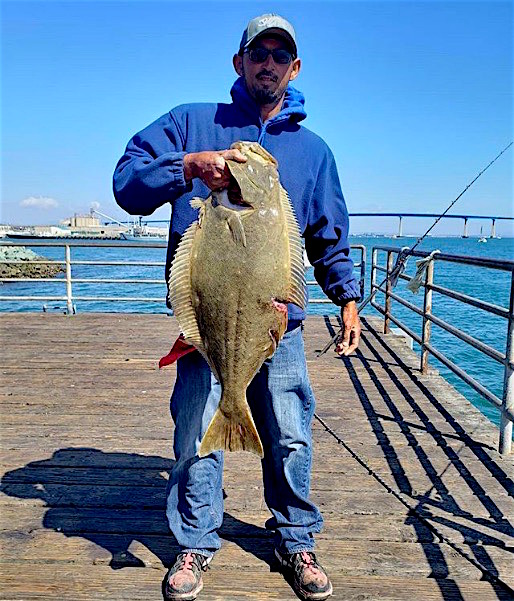
A California Halibut from the pier (picture courtesy of Burgers, Bait & Beer)
Unusual advice came in December 2007 when the pier was declared “dead” by locals with the exception of halibut that were being taken at night on frozen anchovies. It sort of answered the question as to if halibut could be caught at night.
Most of the larger perch are caught inside the pier (between the shoreline and outer portion of the pier) and while bait is the usual offering, some will also be caught on plastic grubs or swimbaits. Light tackle, by the way, is usually the way to go at this pier unless the current requires a heavy sinker. Water here is often crystal clear and the fish can be very wary of the heavier lines, especially during the middle of sunny days. For most species an incoming tide seems best; for the rays and sharks night is by far the best time.
Although only the regulars with know-how seem to do it, fishing down among the inshore rocks themselves can be productive for a number of species including perch (blackperch and rubberlip), opaleye and bass. Top baits will be bloodworms, fresh mussels, and ghost shrimp for most species although peas can also prove effective for the opaleye. For something different drop a small hook and bait into the crevices among the rocks and you may come up with any number of small, unusual fish including kelpfish, blennies and a possible fringehead or two.
When mackerel are present, and this is usually at the end, the two most common riggings will be either a single hook setup or a bait rig. When the mackerel are biting light, use the single hook setup. A single size 4 hook is tied to the end of the line and a small split-shot sinker or twist-on sinker is added a few feet up the line. The most common bait is a small strip of squid about three or four inches long by a quarter inch wide or a bloody piece of mackerel, and I generally prefer to use mackerel. The goal is to keep the bait just a few feet under the surface of the water (since the mackerel like to hang right under the schools of smelt). If the mackerel are on a “mac attack” and you really think you want to catch a bunch, use a bait rig such as a Sabiki/Lucky Lura rig. These riggings usually contain six hooks and do not really need any bait although you may want to sweeten a couple of hooks with bait. The problem with using these rigs is that you may catch 3, 4, or even more mackerel at a time and their twisting techniques can quickly mean the end of your expensive bait rig.
Bait rigs are also often the best rigging when schools of jacksmelt or sardines (use smaller hooks) show up, and it seems like the sardines are once again becoming common (after a nearly decade-long drop in numbers). At times the mackerel only seem to show up after dark. If that’s the case, try using green glow lights above a strip of squid or piece of mackerel.
If bonito are present, artificial lures seem to offer your best chance for success. A plastic bubble with a trailing feather (yellow and green seem best) about 3-4 feet behind often works best, although lately Mega Bait lures in mackerel and anchovy patterns have become popular. When the barracuda show up, and they often will at night, a chrome jig like a Kastmaster or Krocodile often provides the best action (although Rebel Fast Tracks have also been reported to be a good lure).
The pier is also a good producer of sharays, sharks and rays. The most common are probably the round stingrays but a whole panoply of species can show up.
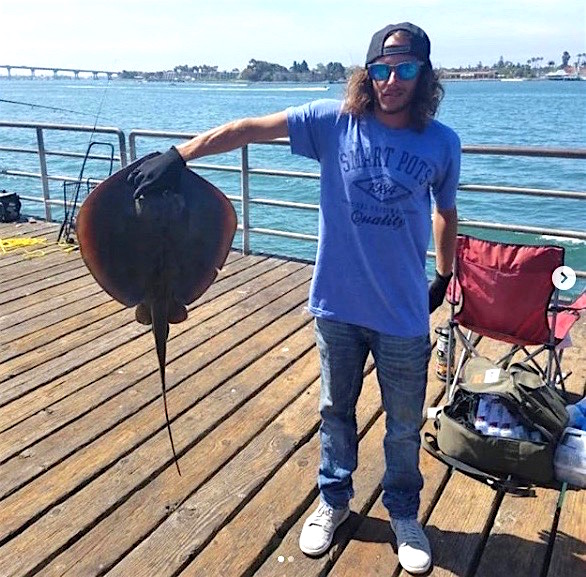
Good-sized Round Stingray (picture courtesy of Burgers, Bait & Beer)
For the best results on sharays, fish at night and use a piece of bloody fish (i.e., mackerel) for the sharks and squid for the bat rays. Most of the sharks and rays will be small to medium size so you don’t really need heavy tackle, although quite a few leopard sharks measuring between 4-5 feet have been landed at the pier.
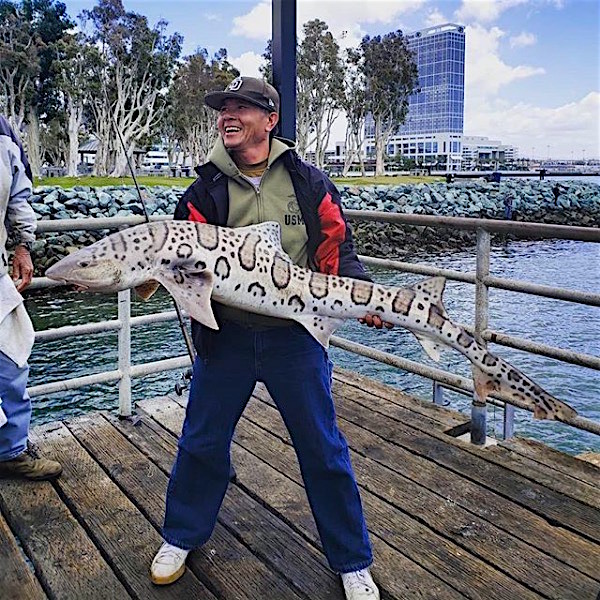
A nice Leopard Shark from the pier (picture courtesy of Burgers, Bait & Beer)
Some pretty impressive shovelnose sharks (shovelnose guitarfish) have also been taken with anchovies, squid and mackerel being the most common bait.
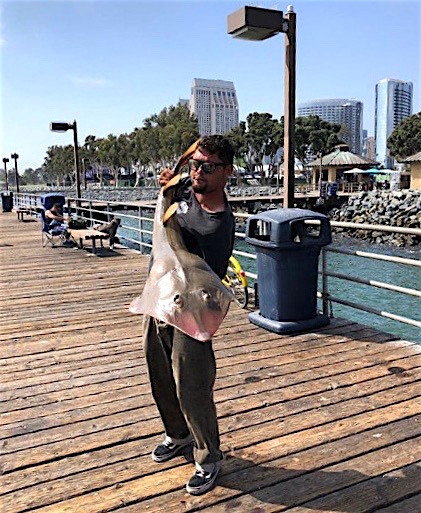
A nice Shovelnose Guitarfish from the pier (picture courtesy of Burgers, Bait & Beer)
Last but certainly not least are the big bat rays. Be sure to bring along a large hoop net since batties over 50 pounds are always a possibility and some are much bigger (and they are often lost). A 100+pound mama bat ray was reported in April of 2002 (all the really big ones are female fish).
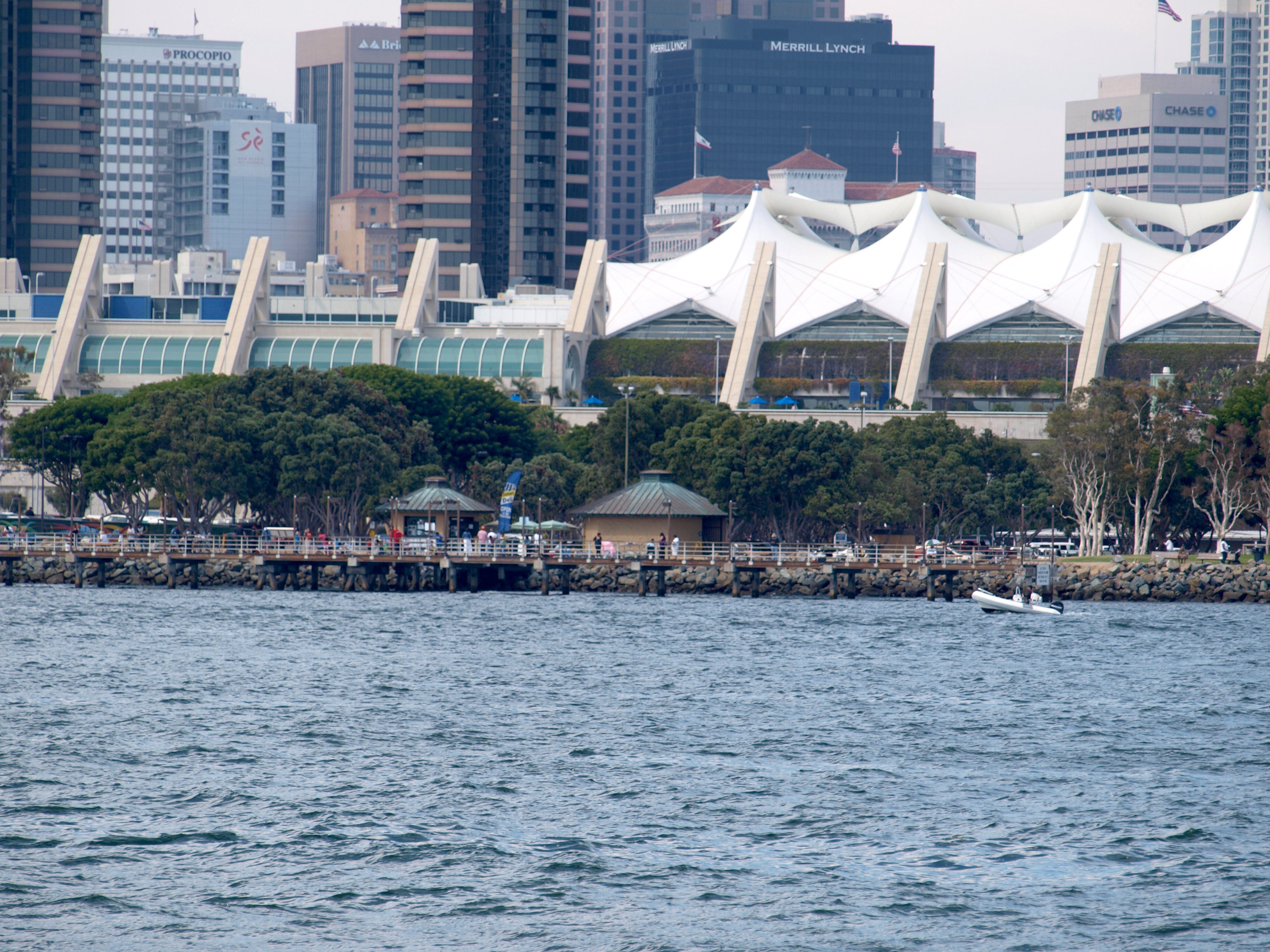
The pier as seen from the water
Potpourri
<*}}}}}}}}}>< — Although not considered a rare fish, whenever a midshipman is caught it seems to merit attention as seen in the following article. However, I have never heard of anyone being scared by a midshipman unless the midshipman was in the Navy.
Fanged Fish Tries To Bite Angler — Rare Catch Puzzles Fisherman
SAN DIEGO — A local fisherman got an unpleasant surprise Thursday when a fish caught in the San Diego Bay (at the Embarcadero Marina Pier) tried to bite him.
The unusual-looking fish had fangs and bulging eyes, said fisherman Michael Wilkins. “I had a hard time getting the hook out of his mouth; he was trying to bite me,” Wilkins said. “I thought I caught a catfish in salt water, and, as I pulled him up, I saw he had teeth. I kind of flipped out because I didn’t know what type of fish it was.” The Department of Fish and Game said the fish is a speckle fin midshipman. It is usually found in the waters between Santa Barbara and southern Baja California. The speckle fin midshipman are more active at night and have photophores, which enable them to glow. They are also known for making humming or grunting noises. —DailyPicture.net, May 30, 2006
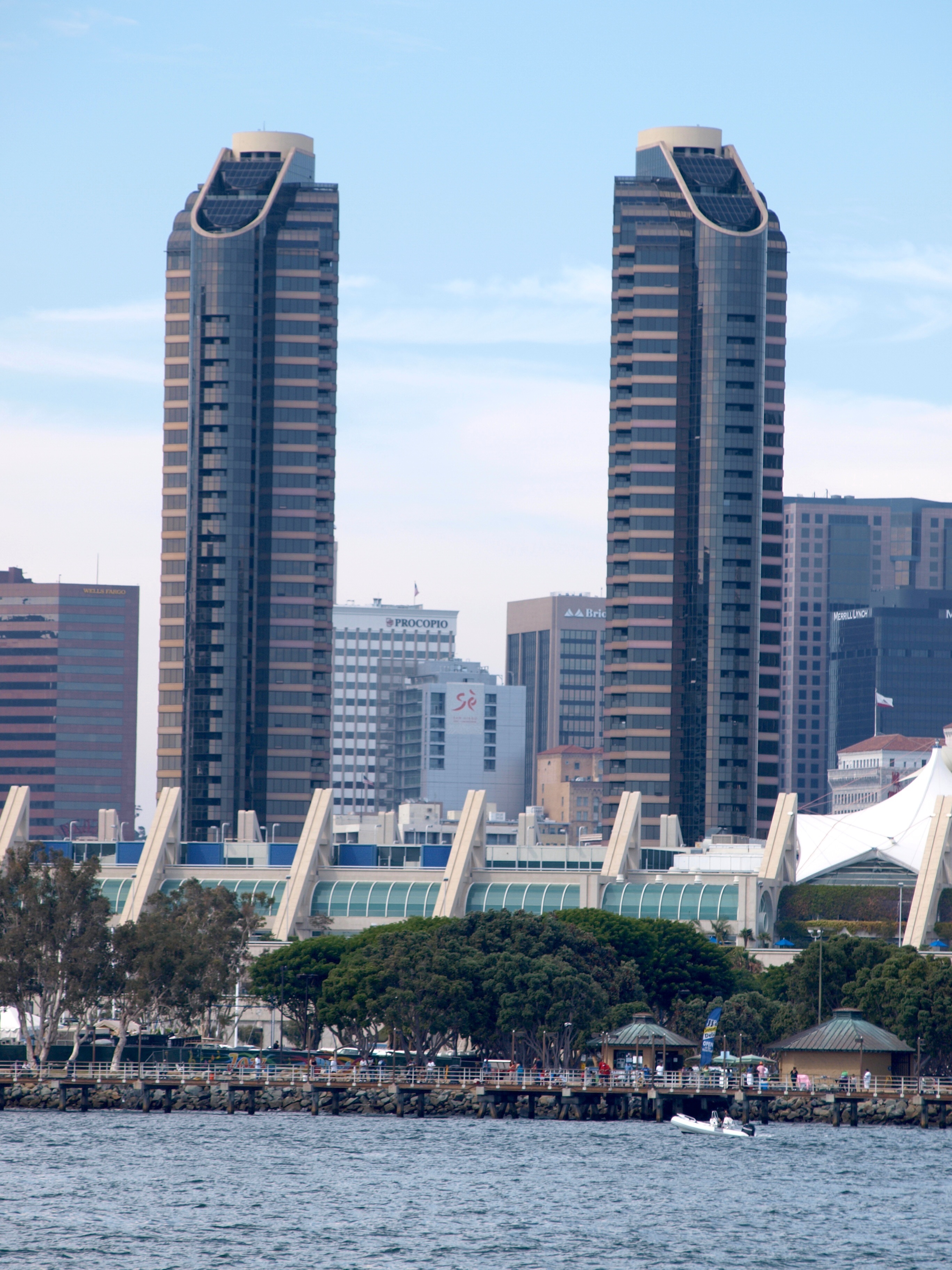
The pier as seen from the water is somewhat dwarfed by the downtown buildings and convention center
<*}}}}}}}}}>< — The park itself is a popular spot for a simple stroll or a jog (it includes a fitness trail), a place to walk the dog, fly a kite, have a BBQ (at one of the BBQ pits) or simply enjoy the sunshine by the bay. One plus is the terrific view of the bay and Coronado that sits just across the water.
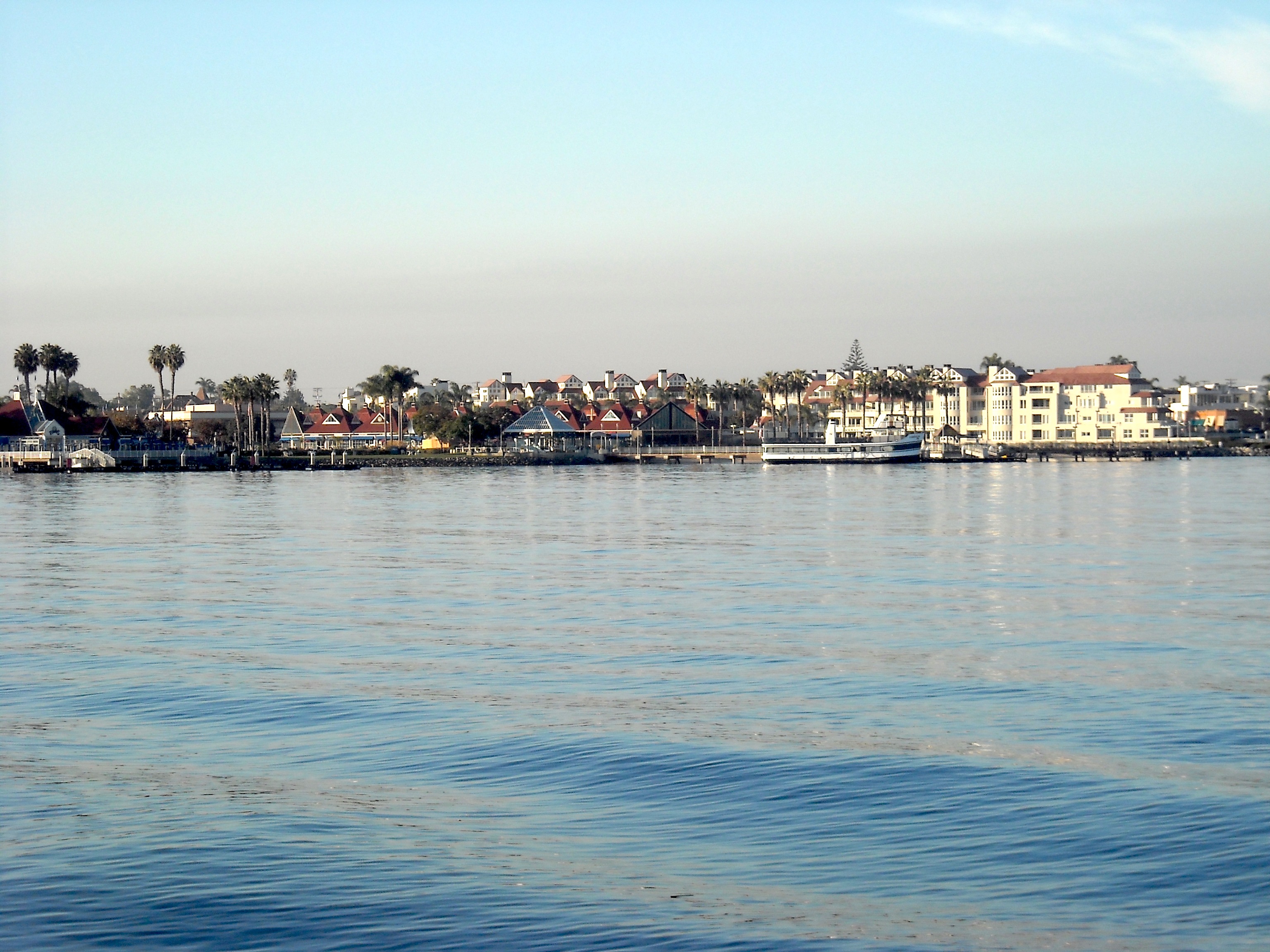
Coronado
For family members disinclined to fish, the Seaport Village is a fairly short ten-minute walk to the north in the Embarcadero Marina Park North. Family members can readily spend their money on other activities and items at that park.
A negative for some people is the number of homeless or semi-homeless that like to hang out at the park. They look gruff and I imagine could scare some people but I’ve never had a problem with any of them. They’re pretty much enjoying the time with their friends, swapping stories as people do, maybe playing a pick-up game of basketball on the public courts, and enjoying the same bay front sunshine and views as other visitors. Plus, the police patrol the area frequently just to keep things cool.
Two times are really crowded and not recommended for fishing. The first is July 4 since the park has proven to be a popular venue to watch the city’s fireworks. The second is during the annual Summer Pops Concerts that are given on the stage in the park. Typically the concerts run during July and August and are held on Friday and Saturday nights (although special concerts are occasionally held on Thursdays and Sundays).
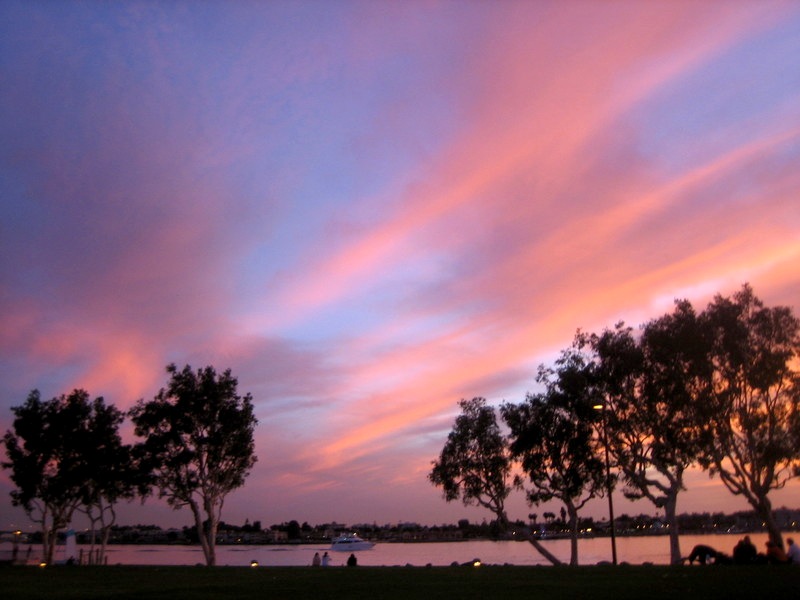
The park and pier see some great sunsets
Embarcadero Marina Park Pier Facts
Hours: Although the pier is supposedly open 24 hours a day, the park and the parking lot close at 10 p.m.
Facilities: Restrooms are adjacent to the pier, fish-cleaning stations and lights are on the pier. A combination bait store and snack shop (Burgers, Bait & Beer), is situated near the entrance of the pier. They mainly have frozen bait and some very good sandwiches. Metered parking ($1 an hour from 8 a.m. to 6 p.m.), a picnic area, and basketball courts are near-by in the park. Fish a little, play a little hoop, fish a little…………….
Handicapped Facilities: Handicapped parking and restrooms are available. The pier surface is planking and gaps are sometimes fairly wide which may cause problems for some wheelchairs. The height of the railing is 42 inches. Posted for handicapped.
How To Get There: Take I-5 to the Market St. exit, take Market west to East Harbor Dr. Turn left and head southeast on East Harbor Dr. Make a U-turn at 28th St and use the left two lanes to turn onto Park Blvd. Park Blvd. turns slightly and becomes Convention Way. Convention Way turns slightly left and becomes Marina Park Way. If you get confused remember that the park and pier are behind the Convention Center. Note that the San Diego Symphony Orchestra Association is constructing a permanent outdoor performance and event venue in Embarcadero Marina Park South. Portions of the park, the basketball courts, the parking lot and the pier reopened to the public on August 17. Other portions of the park remain closed.
Management: San Diego Port District.
